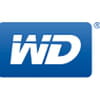Bootable USB for OS
Closed
nivraorazal
Posts
3
Registration date
Tuesday February 17, 2015
Status
Member
Last seen
February 18, 2015
-
Feb 17, 2015 at 12:56 AM
Blocked Profile - Feb 17, 2015 at 07:32 AM
Blocked Profile - Feb 17, 2015 at 07:32 AM
Related:
- Bootable USB for OS
- Bliss os download - Download - Other
- Mac os backslash - Guide
- Remix os player - Download - Android emulators
- Kali os download - Download - Linux
- Xvideoservicethief for mac os x - Download - Video downloads
2 responses

KY_WD
Posts
2053
Registration date
Thursday October 23, 2014
Status
Member
Last seen
February 28, 2017
122
Feb 17, 2015 at 07:22 AM
Feb 17, 2015 at 07:22 AM
Hello nivraorazal,
Insert a USB flash drive into a running computer.
Open a Command Prompt window as an administrator.
Type diskpart.
In the new command line window that opens, to determine the USB flash drive number or drive letter, at the command prompt, type list disk, and then click ENTER. The list disk command displays all the disks on the computer. Note the drive number or drive letter of the USB flash drive.
At the command prompt, type select disk <X>, where X is the drive number or drive letter of the USB flash drive, and then click ENTER.
Type clean, and then click ENTER. This command deletes all data from the USB flash drive.
To create a new primary partition on the USB flash drive, type create part pri, and then click ENTER.
To select the partition that you just created, type select part 1, and then click ENTER.
To format the partition, type format fs=ntfs quick, and then click ENTER.
Important
If your server platform supports Unified Extensible Firmware Interface (UEFI), you should format the USB flash drive as FAT32 rather than as NTFS. To format the partition as FAT32, type format fs=fat32 quick, and then click ENTER.
Type active, and then click ENTER.
Type exit, and then click ENTER.
When you finish preparing your custom image, save it to the root of the USB flash drive.
Hope this helps.
KY_WD
Source: technet.microsoft.com
Insert a USB flash drive into a running computer.
Open a Command Prompt window as an administrator.
Type diskpart.
In the new command line window that opens, to determine the USB flash drive number or drive letter, at the command prompt, type list disk, and then click ENTER. The list disk command displays all the disks on the computer. Note the drive number or drive letter of the USB flash drive.
At the command prompt, type select disk <X>, where X is the drive number or drive letter of the USB flash drive, and then click ENTER.
Type clean, and then click ENTER. This command deletes all data from the USB flash drive.
To create a new primary partition on the USB flash drive, type create part pri, and then click ENTER.
To select the partition that you just created, type select part 1, and then click ENTER.
To format the partition, type format fs=ntfs quick, and then click ENTER.
Important
If your server platform supports Unified Extensible Firmware Interface (UEFI), you should format the USB flash drive as FAT32 rather than as NTFS. To format the partition as FAT32, type format fs=fat32 quick, and then click ENTER.
Type active, and then click ENTER.
Type exit, and then click ENTER.
When you finish preparing your custom image, save it to the root of the USB flash drive.
Hope this helps.
KY_WD
Source: technet.microsoft.com
Hello,
are you trying to create a Windows 7 bootable USB?
if so, follow these instructions:
http://www.microsoft.com/en-us/download/windows-usb-dvd-download-tool#installation
are you trying to create a Windows 7 bootable USB?
if so, follow these instructions:
http://www.microsoft.com/en-us/download/windows-usb-dvd-download-tool#installation

